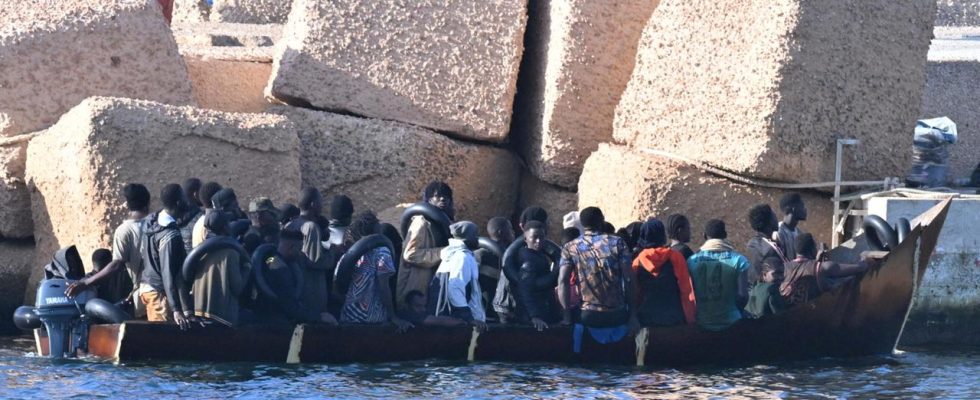The EU interior ministers had barely agreed in principle on a crisis regulation on EU asylum policy when Italy expressed reservations. They had gone too far towards Germany. What’s behind it?
Italy’s Interior Minister Matteo Piantedosi left the EU-level meeting early on Thursday in a bad mood. The Germans were being accommodated too far for his taste, which is why he wanted to have the agreement checked in Rome, the reason given was.
In fact, the new compromise proposal from the Spanish Council Presidency only took into account a few additional demands from the federal government that were easily achievable. Families with children should be given priority in the planned rapid procedures at the EU’s external borders and it was reiterated that individual EU member states cannot declare a crisis situation on their own.
Dispute over sea rescue
The real background for the Italian delaying tactics, on the other hand, is most likely the long-simmering dispute over Berlin’s financing of private sea rescue organizations in the Mediterranean.
It is strange that on the day a possible EU asylum pact is being negotiated in Brussels, seven NGO ships, some of them flying the German flag, are on their way to Lampedusa, Italy’s Foreign Minister Antonio Tajani told the newspaper “La Republic”. Italy is registering a significant increase in migration across its maritime borders this year and is blaming the private sea rescue teams operating in the Mediterranean for this.
A few days earlier, Italian Defense Minister Guido Crosetto was outraged that the German government was acting as if it did not know that its behavior was causing difficulties for a country with which it was theoretically friends. Berlin argues that the financial support for sea rescue teams and other aid organizations that look after migrants in Italy is implementing a Bundestag decision.
Don’t just overrule Italy
We are working on aligning the positions, says EU Interior Commissioner Ylva Johansson. She also already has a plan on her desk to reorganize sea rescue in the Mediterranean. The main aim is to ensure that all actors such as aid organizations, countries of arrival and states under whose flag the ships sail cooperate better in the future. However, this has no impact on the current debate about the crisis regulation. The EU Interior Commissioner is convinced that all obstacles have been removed.
In fact, even a no vote from Italy would not be able to prevent the adoption of the regulation. However, simply overruling one of the EU countries most affected by migration would be just as risky as the fact that the EU is unable to act on an issue as central as migration.
Goal: Reform before the European elections
With this in mind, Italian Foreign Minister Tajani is now trying not to escalate the matter any further. People have been waiting for others for months and nothing will happen if they wait an hour for Italy, says the former President of the EU Parliament. Ultimately, everyone agreed that a European solution was necessary and that we had to work together.
This means that Italy is likely to agree to the crisis regulation at the end, which means that the last of the ten regulations of the migration and asylum package will be on the table ready for negotiations. Its most important elements include better protection of the EU’s external borders, fast-track procedures in the countries of first arrival and better cooperation with home countries and third countries – also in order to quickly achieve more returns of rejected asylum seekers.
The entire package of measures will soon go into the final so-called trilogue negotiations between the Commission, Parliament and the Council of the 27 EU states. The aim is to complete these discussions by the beginning of next year in order to have the Common European Asylum System (CEAS) finalized before the European elections in June.

